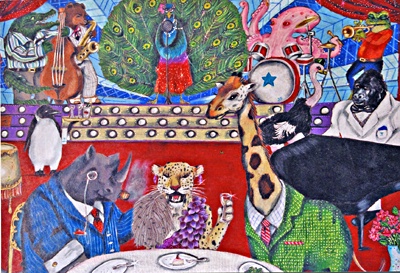All Nonfiction
- Bullying
- Books
- Academic
- Author Interviews
- Celebrity interviews
- College Articles
- College Essays
- Educator of the Year
- Heroes
- Interviews
- Memoir
- Personal Experience
- Sports
- Travel & Culture
All Opinions
- Bullying
- Current Events / Politics
- Discrimination
- Drugs / Alcohol / Smoking
- Entertainment / Celebrities
- Environment
- Love / Relationships
- Movies / Music / TV
- Pop Culture / Trends
- School / College
- Social Issues / Civics
- Spirituality / Religion
- Sports / Hobbies
All Hot Topics
- Bullying
- Community Service
- Environment
- Health
- Letters to the Editor
- Pride & Prejudice
- What Matters
- Back
Summer Guide
- Program Links
- Program Reviews
- Back
College Guide
- College Links
- College Reviews
- College Essays
- College Articles
- Back
Did You Say "Penguin"?
It would be a relatively safe bet that, before reading this sentence, the word “pangolin” had never entered your vocabulary. Billions of dollars are spent each year, in the U.S. alone, on the protection and awareness of endangered animals, but that does not mean every creature receives an equal cut of the funds. Some forms of threatened wildlife garner more attention than others. While you are likely to immediately recognize the word rhinoceros or panda, a pangolin will probably just register as an obscure critter with a name unfortunately similar in sound to penguin. Showing you a picture would help even less. Visual descriptions of pangolins range from “pinecone with legs” to “dinosaur anteater,” just in my own experience. I have even been met with an incredulous expression and the statement, “That’s not a real thing.” (Bonus descriptions: My boyfriend affectionately refers to them as “armadillo skunks” and I stumbled on “little tiny dog dragons” in an article during my research.)
However, pangolins are not only real, they are one of the world’s most trafficked animals. There are eight species still in existence, four in Africa and four in Asia. This alien-like creature resembles an anteater covered in scales composed of keratin, just like human hair and fingernails. They weigh an average of thirty to forty pounds and are anywhere from twelve to thirty-nine inches in length, but size varies greatly between species and males are often substantially larger than females. The word pangolin loosely means “something that rolls up” and, much like an armadillo, that is what these animals do for protection. In the fashion of skunks, they also release a foul-smelling substance to drive away predators. Pangolins in the wild are relatively untouchable – even big cats simply bat at the little ball of scales in confusion. The only real threat to pangolins is... us.
All eight species of pangolin have suffered hunting by humans and claim classifications from vulnerable to critically endangered. In south Asian countries like China and Vietnam, pangolin meat is considered a delicacy and the scales are used in traditional forms of medicine – though with no proven medical properties. Although commercial pangolin trade was banned in September of 2016, demand still exists. The result is a flourishing illegal trade in pangolins, with an estimated 100,000 captured and shipped every year.
To make matters worse, pangolins do not do well in captivity. Even those that are confiscated from poachers may die of stress or issues with their specific insect diet. Due to these complications, few zoos boast a pangolin exhibit – which partially accounts for their lack of publicity. However, pangolins are being slowly rescued from their obscurity by scientific curiosity. This bizarre beastie, once a near-complete mystery, is now on the path to being understood. With increased focus from researchers, zoos, animal rehabilitation facilities, and the public, the fate of the pangolin is in good hands. February 15th has even been designated World Pangolin Day! Although awareness has been growing in recent years, much more must be done to save these scaly mammals.

Similar Articles
JOIN THE DISCUSSION
This article has 0 comments.
